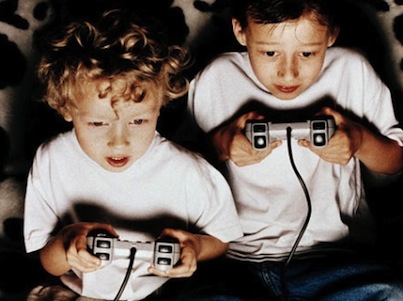
The Electronics Age continues to usher in new improvements that supposedly improve our quality of living, but over the years, it may be causing a more long-term problem in the form of childhood and adult obesity. Video games now keep kids in the house to play with each other, virtually, online, rather than going outside to play and be active. Over the years, this has led to a decline in physical activity among adolescents, which in turn, has now set forth a full-blown obesity epidemic.
The Research
Research shows that each hour spent watching television or playing video games doubles the risk of childhood obesity! (1) Many games today require hour upon hour to advance, and can continue on for months before completion. It is no secret that the declines in physical activity during adolescence increase the likelihood for obesity during adulthood. A comparative study performed by the university of Toronto showed a steady decline in activity for adolescents between the ages of 14-18. (2) Furthermore, being overweight during adolescent years also increases the likelihood of adult obesity. (3)
This is a major problem in the United States, as obesity can lead to chronic conditions such as heart disease, diabetes, high blood pressure, and even cancer. According to the Centers for Disease Control and Prevention, Heart disease is the leading cause of death in the United States.
In order to remedy this, physical activity must be encouraged in adolescents, just as it is with adults. Video game producers have taken a proactive position in encouraging exercise among its consumers. With advances in technology, games now exist that record via camera, and mirror the user on the screen, making the user’s movements the control input for the video game. The Kinect that links to Microsoft’s Xbox is a prime example of this technology, and it continues improving. Perhaps with further advances, and the continued pro-activity of video game production companies, childhood obesity caused by game-play can be curbed.
References:
- Warner J. (July 2nd, 2004) Video Games, TV Double Childhood Obesity Risk. Retrieved from http://children.webmd.com/news/20040702/video-games-tv-double-childhood-obesity-risk
- Allison KR, Adlaf EM, Dwyer JJ, Lysy DC, Irving HM. (2007) The decline in physical activity among adolescent students: a cross-national comparison. Can J Public Health. Mar-Apr; 98(2): 97-100. Abstract retrieved from http://www.ncbi.nlm.nih.gov/pubmed/17441530
- Gordon-Larsen P, Adair LS, Nelson MC, Popkin BM. (2004) Five-year obesity incidence in the transition period between adolescence and adulthood: the National Longitudinal Study of Adolescent Health. Am J Clin Nutr. Sep;80(3):569-75. Abstract retrieved from http://www.ncbi.nlm.nih.gov/pubmed/15321794
